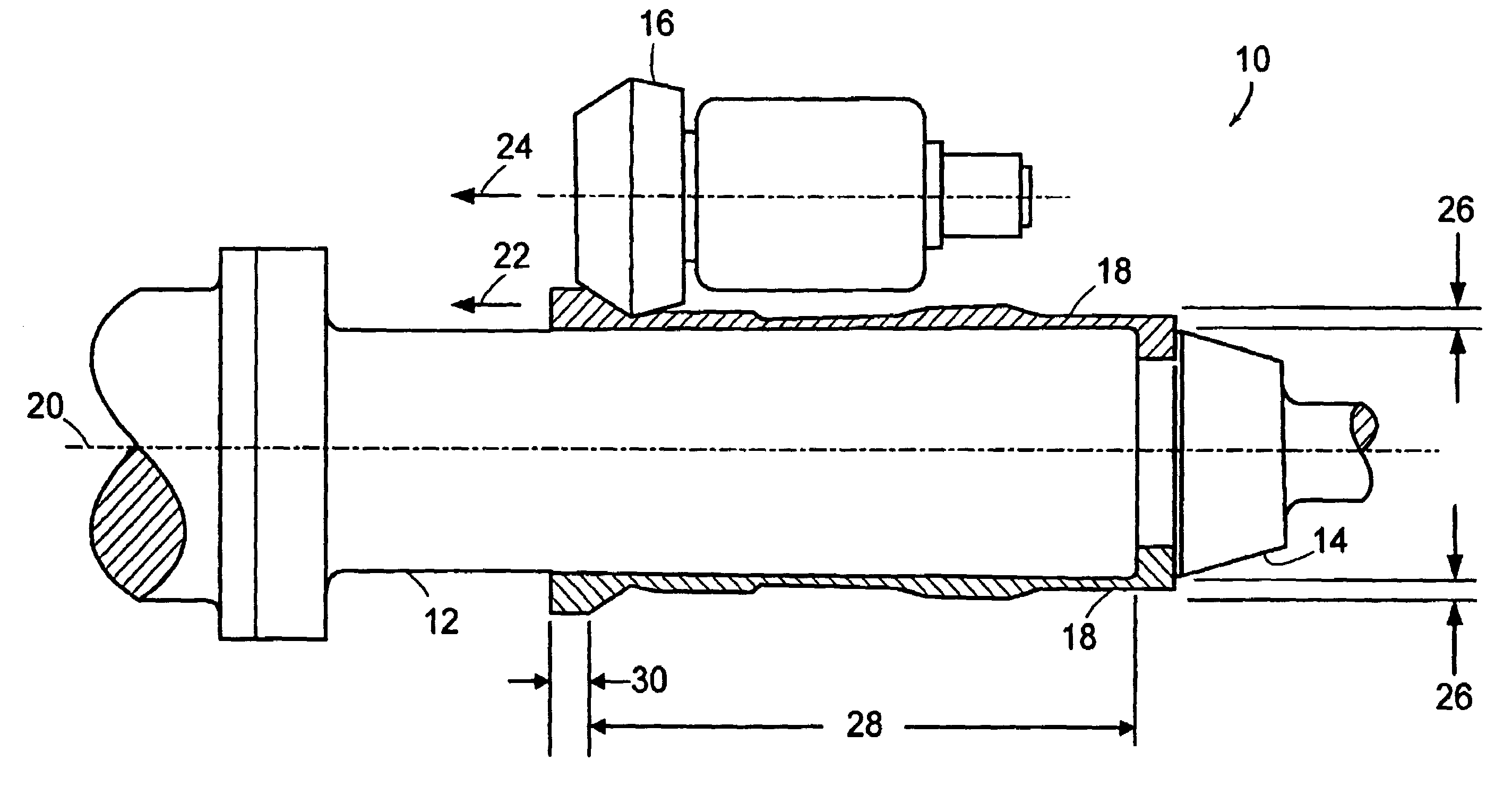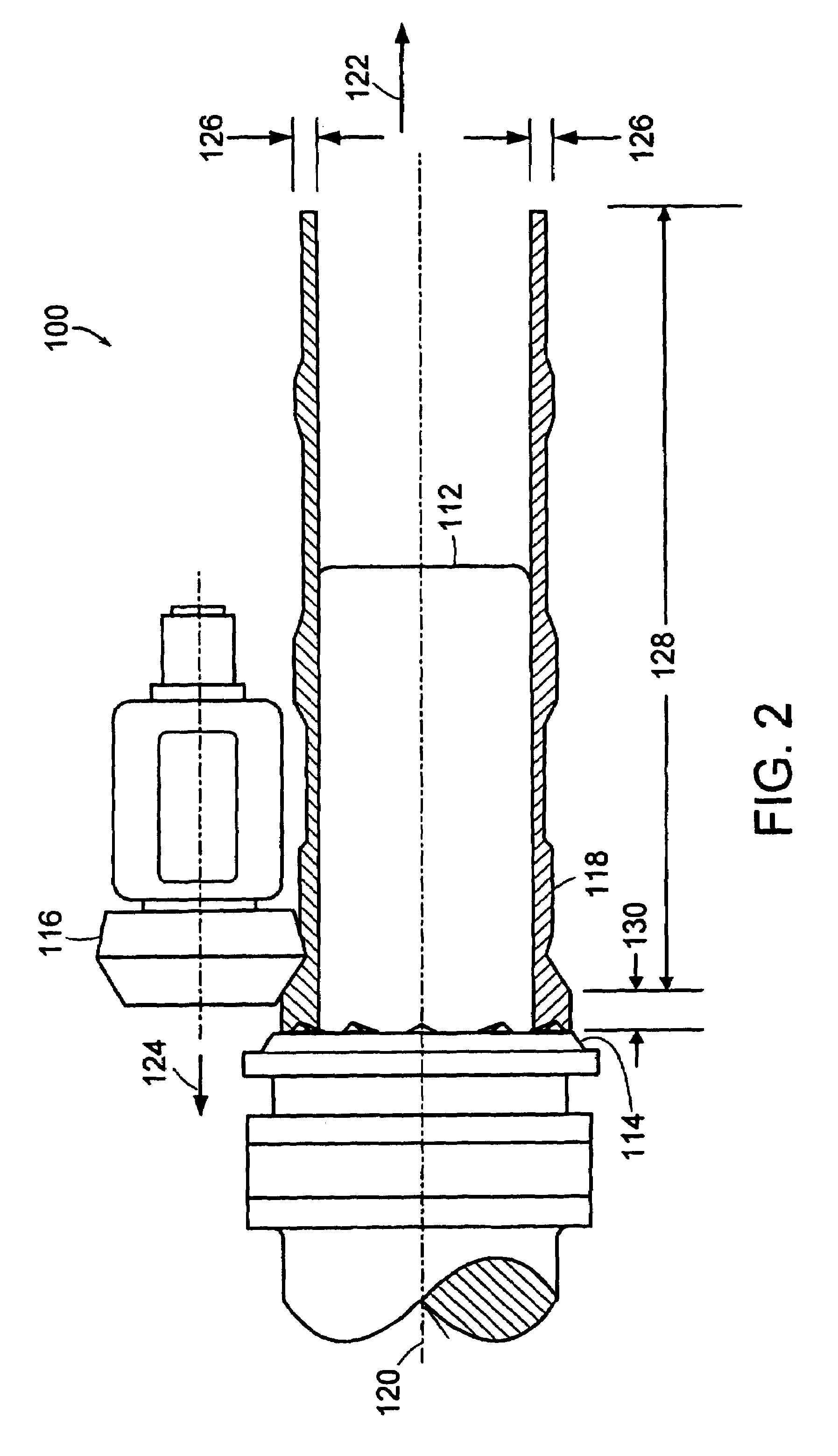Alpha-beta titanium alloy tubes and methods of flowforming the same
a technology of titanium alloy and flowforming method, which is applied in the field of alpha-beta titanium alloy tubes and flowforming methods the same, can solve the problems of inability to flowform certain types of titanium alloy, risk of some loss of ductility in the weld area, and inability to readily form - alloys at room temperature, so as to reduce material waste and labor expenses, increase economic value, and significant ductility
- Summary
- Abstract
- Description
- Claims
- Application Information
AI Technical Summary
Benefits of technology
Problems solved by technology
Method used
Image
Examples
Embodiment Construction
[0020]A description of preferred embodiments of the invention follows. While this invention has been particularly shown and described with references to preferred embodiments thereof, it will be understood by those skilled in the art that various changes in form and details may be made therein without departing from the scope of the invention encompassed by the appended claims.
[0021]In order to subject a metal to a flowforming process, the metal must first be fashioned into a suitable preform shape so it can be mounted onto the flowforming mandrel. It has been surprisingly discovered that the phase structure and / or the grain structure of a titanium alloy is important in preventing the occurrence of cracks and other imperfections during a subsequent flowforming process. For example, maintaining or creating an α-β phase structure in a titanium alloy preform can reduce the occurrence of cracks and allows the preform to be successfully flowformed. In addition, or alternatively, it is be...
PUM
| Property | Measurement | Unit |
|---|---|---|
| temperature | aaaaa | aaaaa |
| temperature | aaaaa | aaaaa |
| thickness | aaaaa | aaaaa |
Abstract
Description
Claims
Application Information
 Login to View More
Login to View More - R&D
- Intellectual Property
- Life Sciences
- Materials
- Tech Scout
- Unparalleled Data Quality
- Higher Quality Content
- 60% Fewer Hallucinations
Browse by: Latest US Patents, China's latest patents, Technical Efficacy Thesaurus, Application Domain, Technology Topic, Popular Technical Reports.
© 2025 PatSnap. All rights reserved.Legal|Privacy policy|Modern Slavery Act Transparency Statement|Sitemap|About US| Contact US: help@patsnap.com



